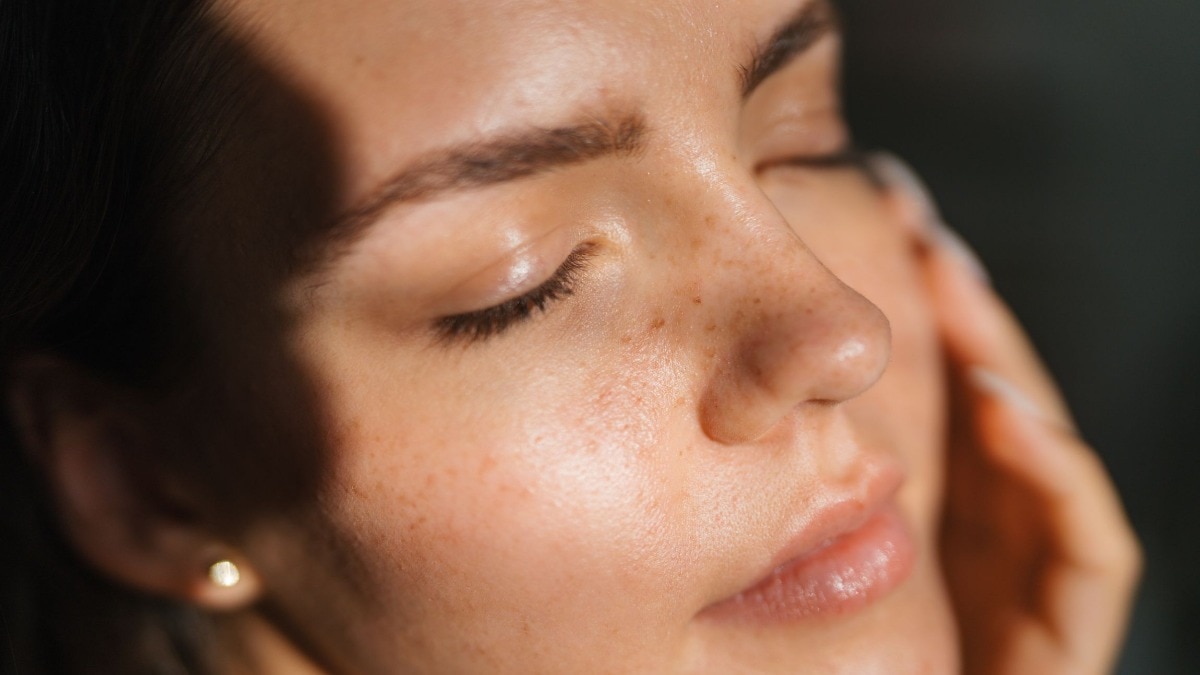
What's behind the return of the facelift?
There's been a rise in patients booking the cosmetic procedure—we speak to the experts to find out why.


Whether it’s Nicole Kidman having Botox on screen in Babygirl, or Kylie Jenner detailing her exact boob job spec on Instagram, there’s very little stigma surrounding aesthetic tweakments in 2025. Yet, in the past few months, there’s been a surprising resurgence of a cosmetic procedure that many thought had all but been eradicated: the facelift.
A handful of A-list celebrities have been seen sporting newly taut complexions in recent months (you know who they are), prompting many on social media to speculate that they have undergone the procedure, with some eagle-eyed followers pointing out that tell-tale scarring behind the ears. One such celeb is 69-year-old Kris Jenner, whose dramatically younger appearance had her being confused with her 44-year-old daughter, Kim Kardashian, when she stepped out in Paris last month. After an overwhelmingly positive reaction online, Jenner’s spokesperson confirmed to People magazine that she had undergone a little nip and tuck with the plastic surgeon Dr Steven Levine.
In many ways, it’s the renaissance no one saw coming. After all, a decade ago, the British Association of Aesthetic Plastic Surgeons was reporting a 53 per cent decrease in patients undergoing face and neck lifts. This year’s figures from BAAPS show that there’s been an 8 per cent increase. So what’s going on?

One key reason for the current boom in facelifts is that the techniques used have improved dramatically over the past 30 years, making it safer and delivering better results. “The facelift technique, which was introduced in the ‘90s had a lot of problems associated with it and a lot of complications, so people were against it,” explains plastic surgeon Georgios Orfaniotis. “Now, we go deeper and address the muscle layers under the skin, which gives people more balanced results, which are longer-lasting.”
Interestingly, back in 2015, the death knell for the facelift was partly blamed on the rising popularity of non-invasive treatments, such as radiofrequency, laser and, of course, the aforementioned Botox, filler and polynucleotides. Yet today, some are citing the overuse of these treatments as a leading cause of this mini-boom in facelifts.
“I am seeing more patients who have reached the limits of what non-surgical treatments can do and want a natural appearing, long-lasting rejuvenation,” says the BAAPS president, Nora Nugent. “Many also do not want to continually add products into their facial tissues.” With facelift results typically lasting for at least 10 years, it can be a longer-term solution to ageing than constant Botox or filler appointments.
The rising use of weight-loss jabs like Ozempic and Wegovy is also having an impact, says Nugent. “With significant weight loss, many people lose volume and develop laxity in their faces and necks,” she says. “We have always seen patients after weight loss for facial rejuvenation, but this has increased a lot since the advent of GLP-1 receptor weight-loss medications.
”As ever, social media and Zoom also play their part too, with the amount of time we spent looking at ourselves during the pandemic—and the subsequent remote or hybrid working models put in place ever since—making things even worse. “Constant video exposure highlights facial ageing in real time—even to younger people,” says Dr Maryam Zamani. “So-called ‘Zoom dysmorphia’ is real.”
Orfaniotis agrees. “The phone in general has played a massive role in distorting how we see our faces,” he says. “We have such an awareness now of every little imperfection that we scrutinise in the mirror; things that you would never have thought to be bothered about before are now massive concerns to people in their 40s or even younger.”
Perhaps the most susceptible to this kind of pressure are younger people, which would explain why increasingly more youthful patients are undergoing facelifts. “The majority of my patients undergoing facelifts are in their 50s and 60s,” says Nugent. “However, I am seeing a rise in younger patients in their 40s who want to look at longer-lasting rejuvenation whilst retaining natural appearance and movement or facial expression.” The rise of a new technique—the SMAS (Superficial Musculoaponeurotic System) mini facelift, which addresses sagging in the lower face, jawline and neck—has proven particularly popular with this group, as its results are less ‘obvious’.
Social media has also made surgery seem like a more accessible option, according to Orfaniotis—not just because there is more transparency, but because we know so much more about it. “There’s more information out there now,” he says. “You can find a good recommendation, you can look at before-and-after pictures on Instagram, and there’s so much transparency in terms of what it might cost or what it would entail in terms of the recovery.” Yet for Orfaniotis, it’s still of vital importance that people do their research into a good surgeon, particularly as it’s extremely difficult to correct a botched facelift, with the cost of a procedure undoubtedly reflecting the skill of the practitioner. “It can ruin your face if you make the wrong decision,” he says. “I get sent pictures of surgeries that have gone wrong every week, but I can’t always help, because it is so difficult to fix.”
Lead image: Getty Images
This article originally appeared on Harper'sBazaar.com/uk
Also read: The expert guide to buccal fat removal surgery
Also read: We’ve entered a new era of plastic surgery transparency. Finally










